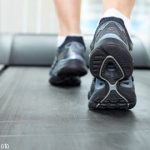According to research, the most common type of foot osteoarthritis (OA) occurs in the first metatarsophalangeal (MTP) joint. Despite the many possible treatments, limited evidence exists to demonstrate the effectiveness of such treatments as physical therapy, anti-inflammatory medications, intraarticular injections, foot orthoses and surgery. However, “biomechanical factors are thought to contribute to first MTP joint OA, suggesting that mechanical intervention may hold some promise as an effective treatment for this condition,” write Hylton B. Menz, PhD, from La Trobe Univeristy, Bundoora, Victoria, Australia, and colleagues in their latest research.
With this in mind, Dr. Menz and colleagues compared the effectiveness of prefabricated foot orthoses with rocker-sole footwear in reducing pain in people with first MTP joint OA. The results of the study were published in the May 2016 issue of Arthritis Care & Research. This is the first study to evaluate the effectiveness of mechanical interventions in reducing foot pain in patients with first MTP joint OA.
In this 12-week parallel group study, 102 participants were randomized to receive either custom foot orthoses (52) or rocker-sole footwear (50). At baseline, the presence of radiographic first MTP joint OA was determined using a radiographic atlas. The primary outcome measure was the foot pain domain of the Foot Health Status Questionnaire measured at baseline and Weeks 4, 8 and 12. Secondary end points included measurements of function, the severity of pain at the first MTP joint while walking, duration and severity of stiffness at the first MTP joint, and global change in symptoms.
The Results
“Both groups demonstrated an increase in the [Foot Health Status Questionnaire pain domain] score (17 points in the orthoses group and 22 points in the footwear group), which is indicative of improved foot health,” write the authors. “However, there was no difference between the groups at the 12-week follow-up.”
Few statistical differences for secondary outcomes were apparent between the groups. However, the footwear group was more likely to experience at least one adverse event (39% vs. 16%), as well as experience new-onset low back pain during the study (17% vs. 4%). Additionally, this group scored lower in the perception of global improvement (39% vs. 62%). “Meaning that one in every five participants treated with footwear had an unsuccessful outcome compared [with] those receiving orthoses,” write the authors.
Interestingly, the participants in the orthoses group reported wearing their intervention for a greater number of hours than the footwear group. The authors note that although both treatments were similarly effective in reducing pain and MTP joint pressure, this increase in wear may indicate that foot orthoses are a preferred intervention. The difference in adherence was not an expected finding and may be due to the aesthetic appearance of the footwear or the constraints of work attire.
“The orthoses are transferable, can be accommodated in most types of footwear and are hidden from view, which may have facilitated them being worn more frequently,” write the authors in their discussion. They add, “It’s possible that rock-sole shoes have the potential for greater effectiveness if barriers to adherence could be overcome.”
The authors conclude their research by calling for controlled studies that focus on the effectiveness of foot orthoses and footwear interventions. Such studies can work to better identify patients who will benefit from the treatments and address barriers to adherence for rock-sole footwear.
Menz HB, Auhl M, Tan JM, et al. Effectiveness of foot orthoses vs. rocker-sole footwear for first metatarsophalangeal joint osteoarthritis: Randomized trial. Arthritis Care Res (Hoboken). 2016 May;68(5):581–589. doi: 10.1002/acr.22750. [Epub ahead of print]

